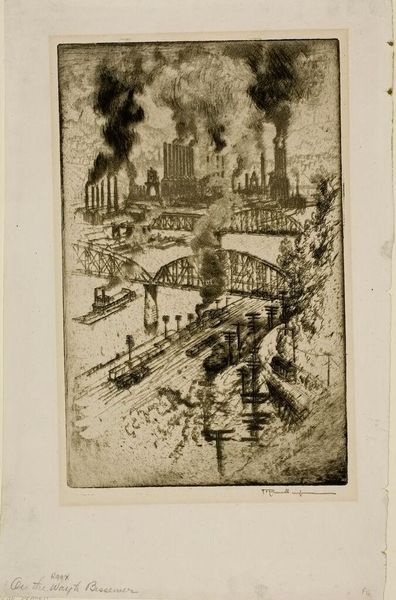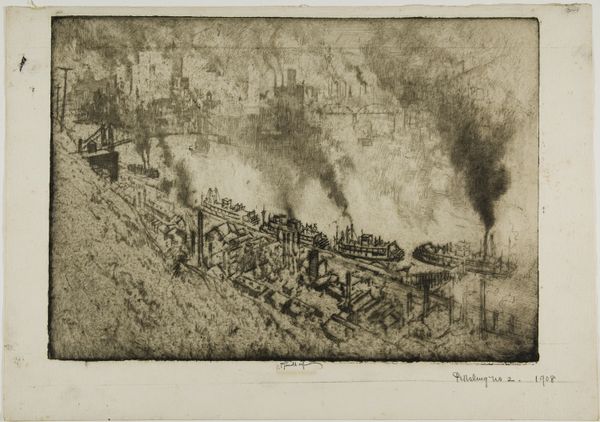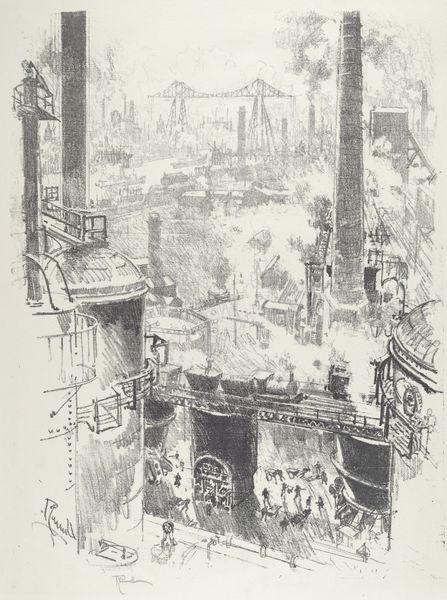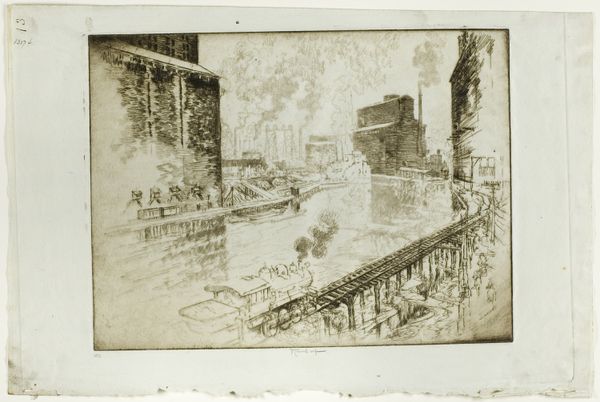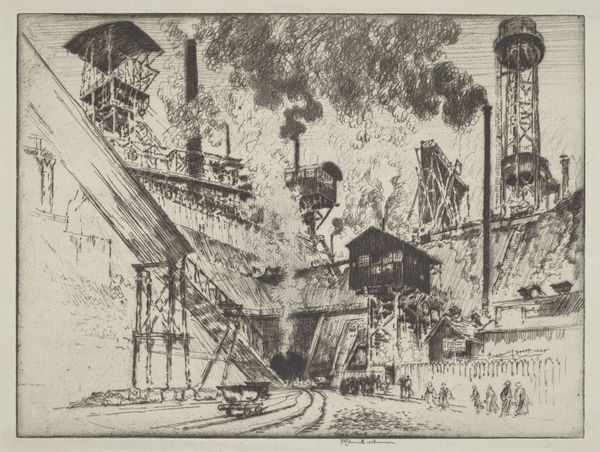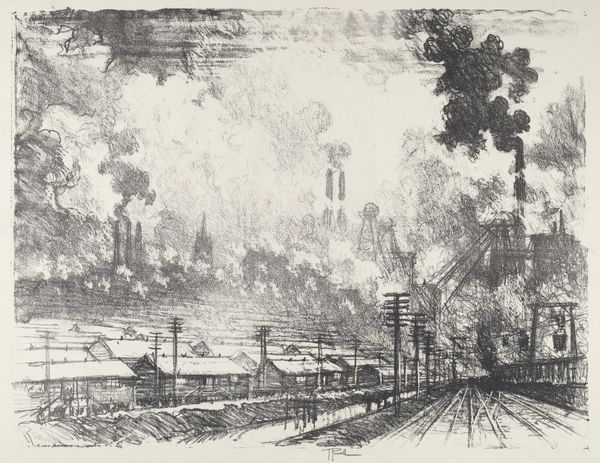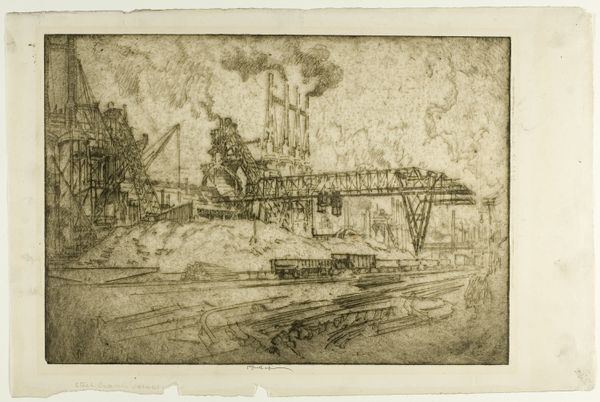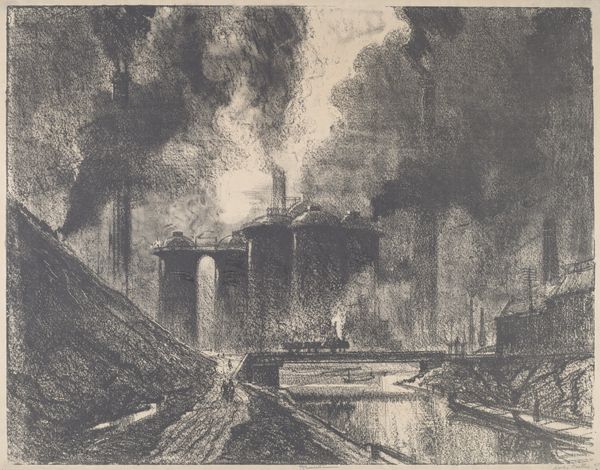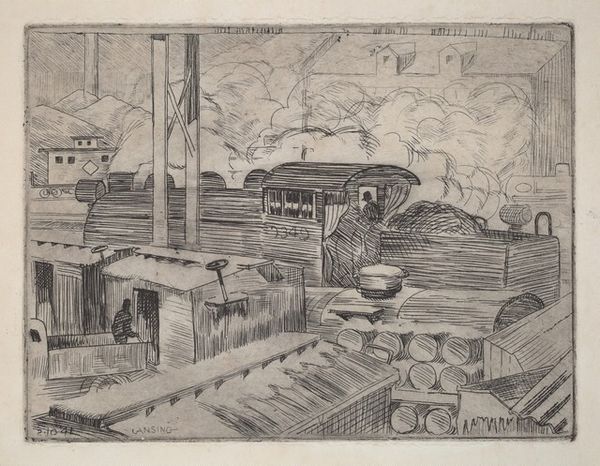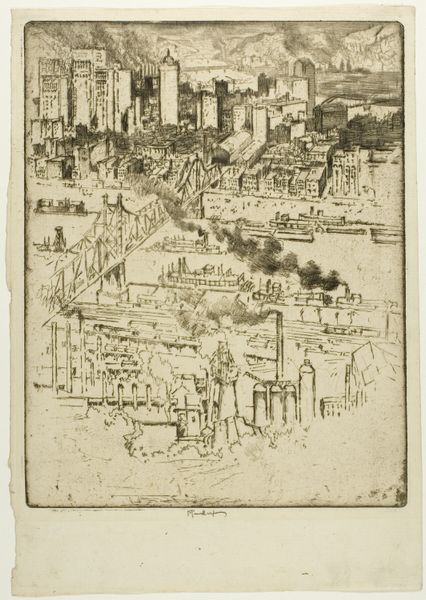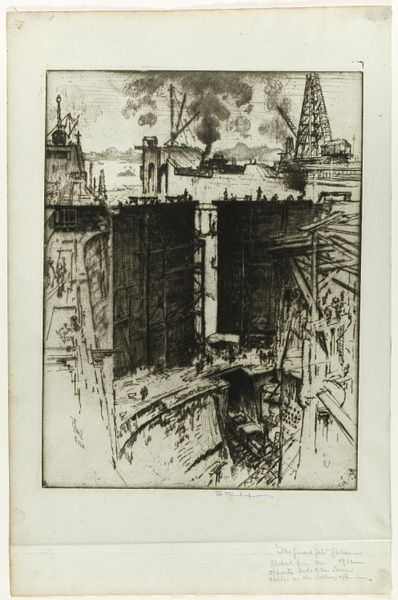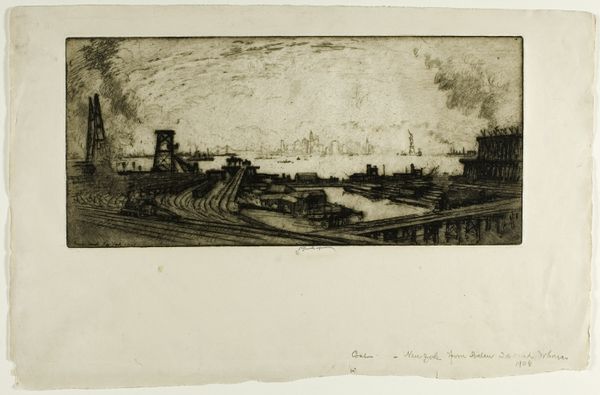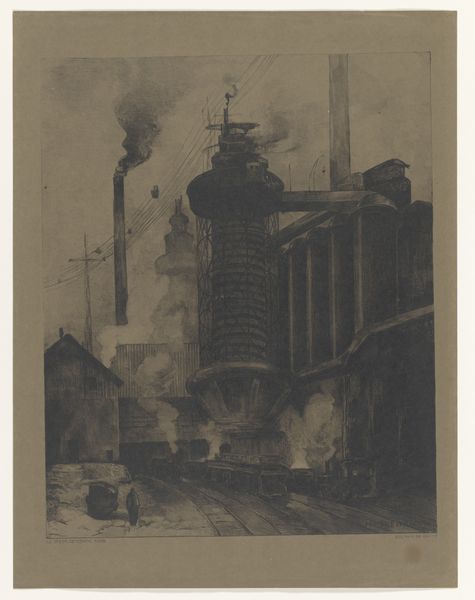
drawing, print, etching, paper
#
drawing
# print
#
etching
#
landscape
#
etching
#
paper
#
realism
Dimensions: 280 × 214 mm (image/plate); 334 × 237 mm (sheet)
Copyright: Public Domain
Editor: Here we have Joseph Pennell's etching, "Edgar Thompson Works, Bessemer," created in 1909. It’s currently held at The Art Institute of Chicago. My first thought is how striking the contrast is between the delicate lines of the etching and the gritty industrial subject matter. What symbols or narratives do you see in this depiction of industry? Curator: Pennell certainly captured the drama inherent in industry at the turn of the century. Note how the smoke stacks punctuate the sky, almost like competing steeples. Can you think of other imagery or ideas historically associated with smoke? Think about what comes to mind... Editor: It makes me think of progress, maybe, but also pollution. Almost a Faustian bargain of advancement at a cost? Curator: Precisely. Smoke signals both transformation and potential danger. The high bridge could even signify a transition between a world of labor below and a sky being changed above by the factory. Pennell wasn't simply documenting; he was tapping into something deeper, a visual language understood even today, where we can glorify or condemn images of factories depending on context. Do you think that he is suggesting an ideal? Editor: Possibly, in a heroic, if conflicted, sense. It's beautiful and terrifying all at once. I’m not sure what I think, other than I want to know more. Curator: The power of such symbols often lies in their ability to evoke those contradictory responses, which makes Pennell’s work so enduring. We carry within ourselves cultural understandings about what industrial advancement can entail, positive or negative. Editor: It’s interesting to see how such an early image carries so much weight still today! Curator: Absolutely. It is a piece filled with complexities which reveal the culture of a century ago and the culture of the modern world.
Comments
No comments
Be the first to comment and join the conversation on the ultimate creative platform.

